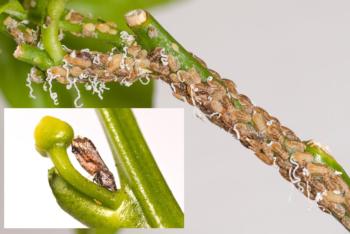Residential ACP Management Strategy

The Asian citrus psyllid (ACP) is widely established in both commercial and residential citrus throughout Southern California. Large-scale eradication of ACP in these environments is not feasible. Rather, the goal is to reduce psyllid populations to slow the spread of huanglongbing (HLB) disease. In 2016-17, the number of HLB-infected trees started to rapidly increase. As of Fall 2021 more than 2500 HLB-infected trees have been officially confirmed in residential areas of Los Angeles, Orange, Riverside, San Bernardino, and San Diego counties. These trees have been removed, but there are likely more out there that are infected with the pathogen that causes huanglongbing. Home gardeners can help by reporting trees they suspect have the disease and if they are in a community where HLB-infected trees have been found, to consider removing their citrus trees. For recommendations on alternative, non-citrus fruit trees that are appropriate for your area, consult with your local nursery or Master Gardeners (https://mg.ucanr.edu/).
See the tabs at the left to answer questions about what steps you should take to help in the effort to control the psyllid and disease in order to protect California citrus.
